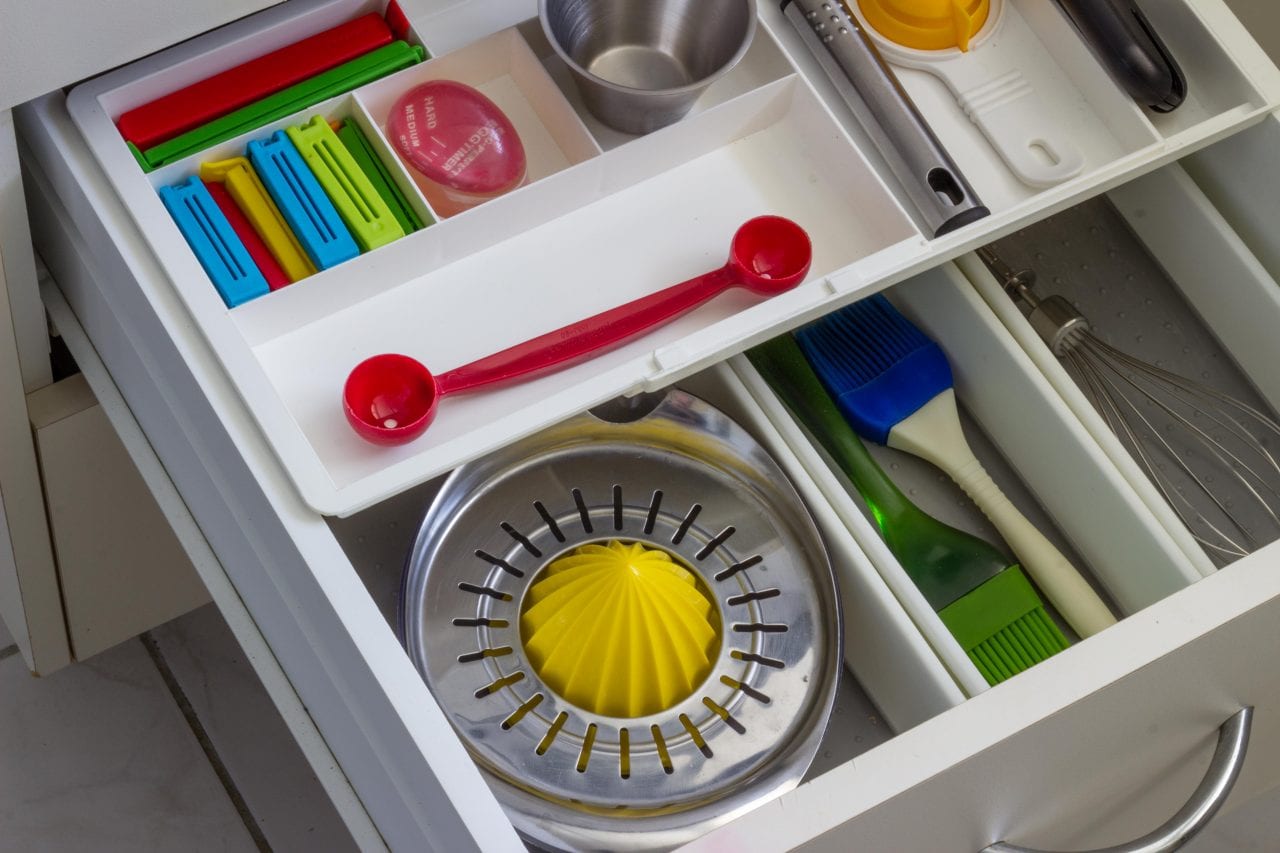Ask people what they want out of a system of organisation, and they’ll invariably all eventually mention one word: “simple”. Unfortunately, finding a simple system of organisation is not so… simple. Why is this? Well, because there are a lot of different ways in which a system might be simple, and it’s impossible to be simple in all of the ways at once.
Consider an example of physical organisation: the simplest method for storing your kitchen implements would be to have one enormous drawer that you throw them into whenever you’re not using them. That’s a really simple system: everything goes into the same drawer, all the time, no matter what it is. But when you need to retrieve items for use in the kitchen, suddenly this simple system is not very simple at all. How on Earth are you going to find the whisk amidst all this clutter?
The simplest method for retrieving kitchen implements is to have “a place for everything, and everything in its place”. Each item belongs in a particular spot, making it easy to find when you need it. But this makes setting up your kitchen more complicated: you need to carefully consider where each item should belong before you go ahead and give it a home. It also makes storing your items on a day-to-day basis more complicated: when you’re putting the whisk away, you can’t just throw it into the one big drawer, you need to think about exactly where it belongs before you put it away.
A lot of people use the “one big drawer” method for their to-do list. They chuck everything they need to do onto one big to-do list, in no particular order, and hope that this will help them be organised. But this isn’t necessarily helpful when you’re faced with the day-to-day job of retrieving tasks at the most helpful times.
Here’s the big secret for a simple-to-use daily to-do list: take the time first thing in the morning (or even better: the night before) to put all of your day’s tasks into the order you actually want to do them in. It seems like more effort, and it does take 20 minutes or so. BUT:
The fuel your brain runs on is glucose. Every time you switch between planning and doing, your brain burns a little bit more glucose, because switching takes effort. If your to-do list isn’t in order, that means every time you finish a task and glance at your list to plan what you’re going to do next, you’re using up extra brain fuel. You know that sluggish feeling you get at the end of the day, when making decisions and sticking to your diet suddenly become difficult? That’s your brain running low on glucose.
So: do all of your planning in one go. Put your to-do list items into the order you actually want to do them in. Save yourself the trouble of deciding what’s next dozens of times every day. Your brain will thank you for it. Every time you complete a task, you’ll know exactly what to do next: the next item on your to-do list. Simple!




